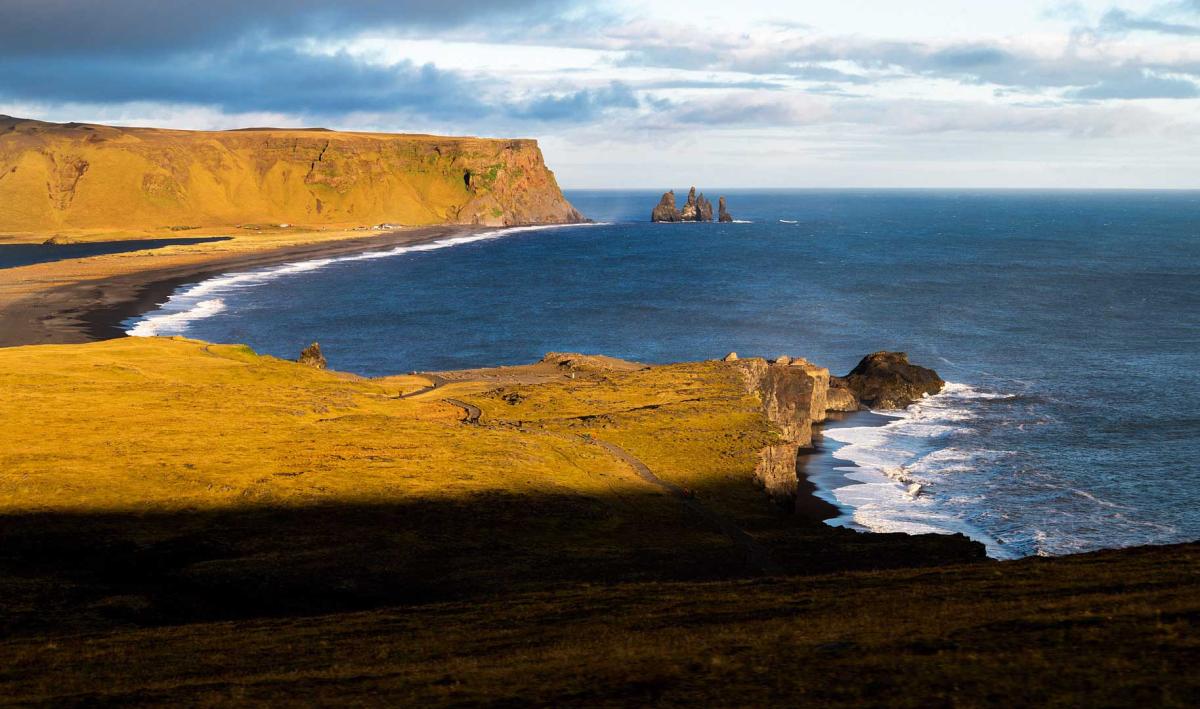

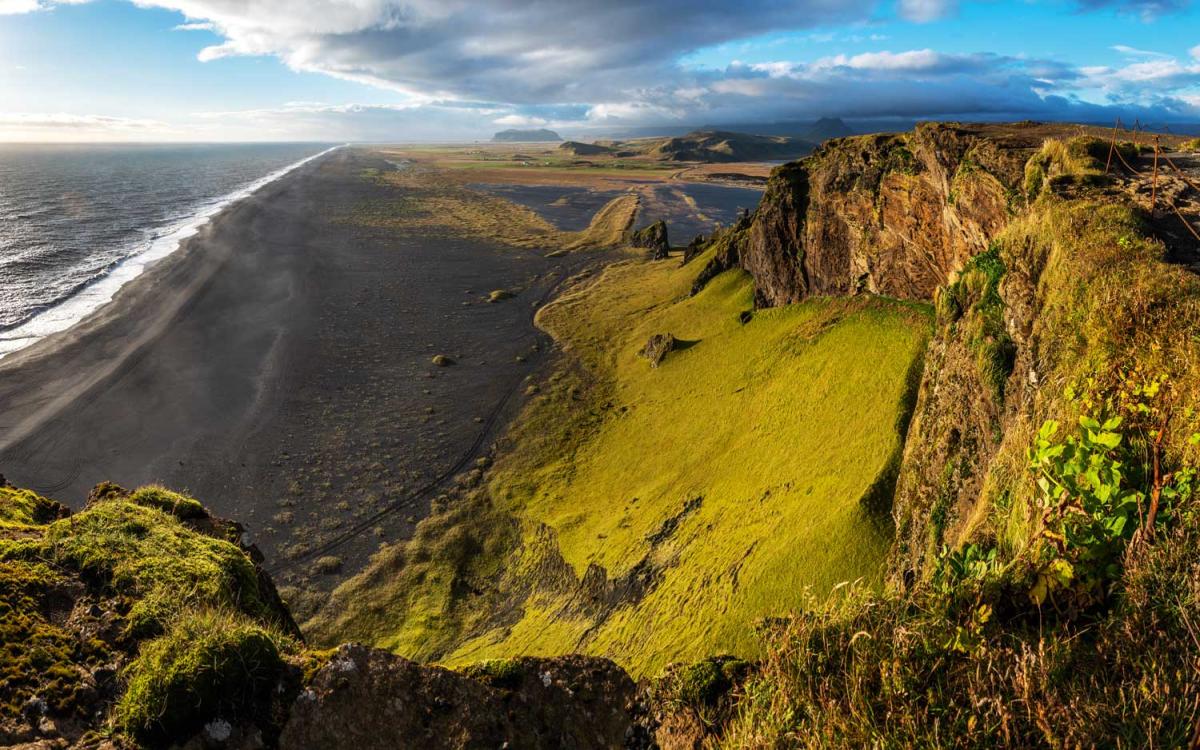
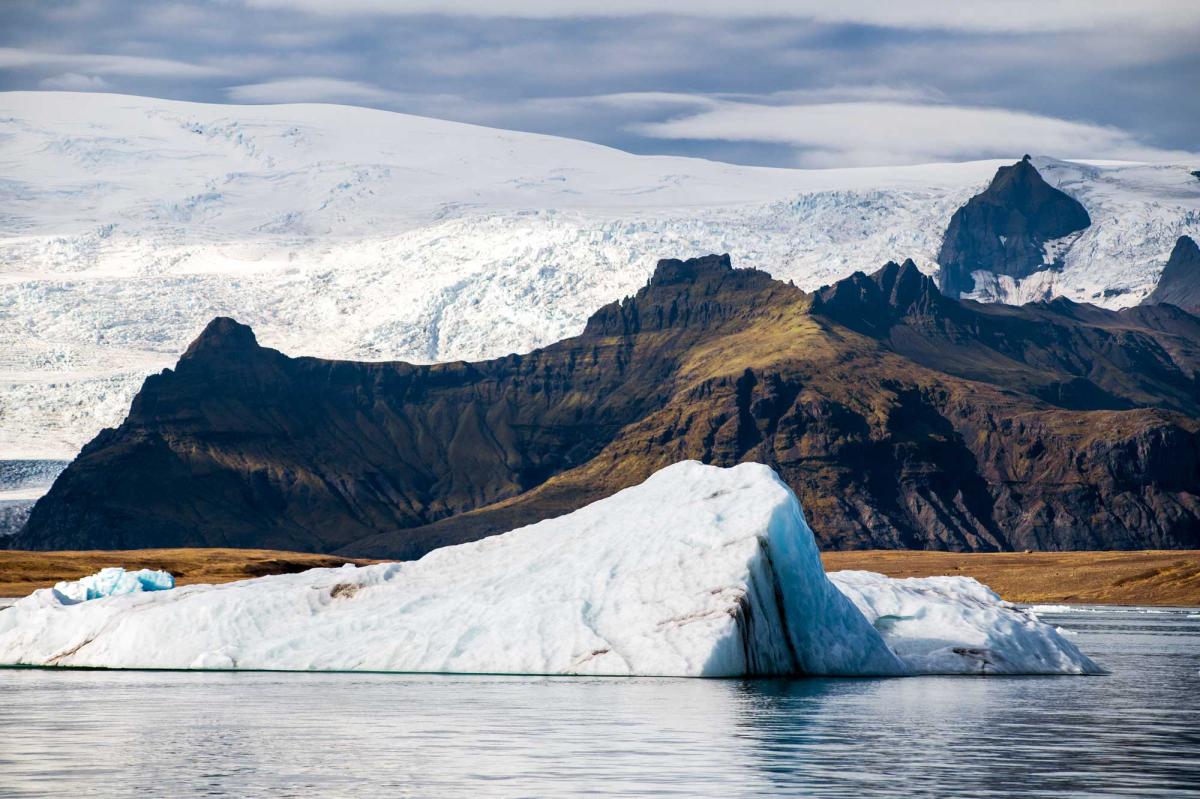
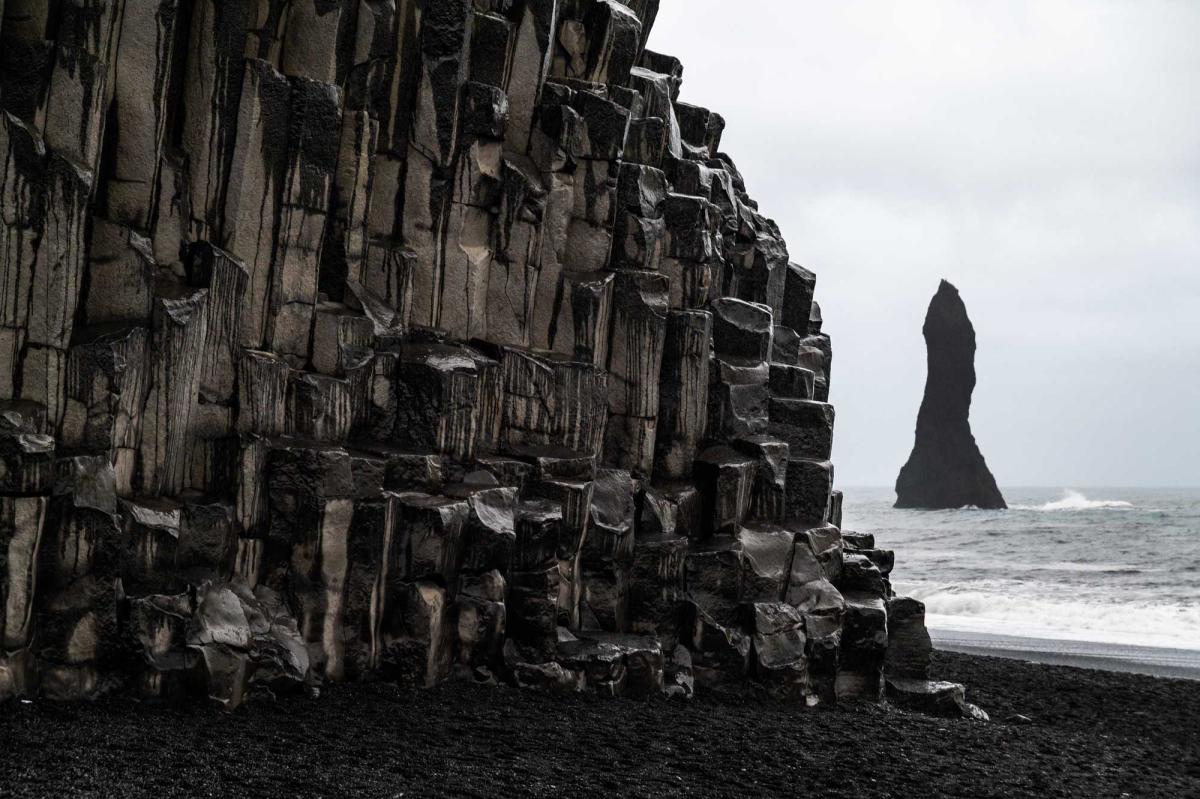
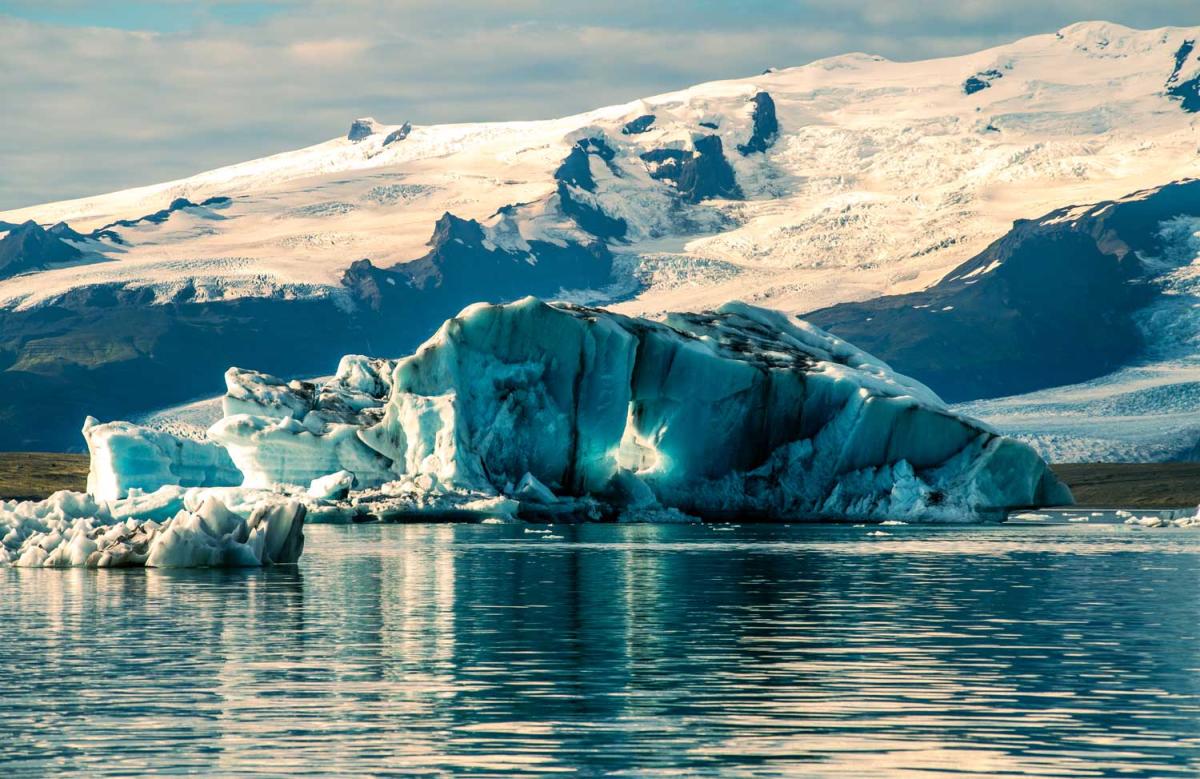
It is described by the cliché "fire and ice", and "high standard" is its other name.
text and photos EMIL DANAILOV
The wind has picked up so much that the rain is falling horizontally. A sudden gust jolted the bus roughly and sent it tumbling toward the ditch. The invisible child of some Icelandic giant crouches by the road and plays with the cars, blowing them into the abyss. The driver slows down and starts driving in the oncoming lane - it is downwind and there will be more room to retreat to the side. He looks at me with barely noticeable concern and says, “Winter is worse. Then the roads get icy."
See the morning dancer, crossing the sky, I hum an old song to myself the next day as I watch the eternal morning dancer climb slowly into the September sky. The day of the autumnal equinox is the time of a brief reconciliation between the North and the South - then, from the equator to the two poles, the Sun distributes darkness and light fairly over the entire Earth. The day when the polar regions are stripped of their most iconic distinguishing feature – endless summer days and endless winter nights. It's blowing again, it's clear, and the slanting northern sun turns yesterday's almost monochrome landscapes into a captivating play of rich yellow, green, brown, black and white. The yellow of the wind-twisted autumn grass, the green of the ever-moist moss that crawled with its soft step on the steep and eroded brown hills, the black of the beaches covered with anthracite volcanic sand, the white of the dazzling glaciers that hold the Icelandic mountains in a cold millennial captivity. And blue – the deep, vibrant blue of the sky. Yesterday was completely different. What is the true face of Icelandic nature?
They describe it with the cliché "fire and ice" and, come what may, it's true. Iceland is proof that the planet is still alive – its blood continues to bubble deep beneath our feet. The young island is located just outside the Arctic Circle, right on the rift between two tectonic plates - the North American and Eurasian tectonic plates, and the deafening rumble of their titanic battle in the bowels of the Earth often shakes the thin shell we call Icelandic land. Volcanoes spew molten magma onto hissing snow, geysers steam valleys and waft the smell of sulphur. Massive permafrost covers a large part of the country's territory, not even the warm Gulf Stream - the ocean current, which makes the Icelandic climate not so cold, but is the reason why the weather is so dynamic every day. The collision of all natural elements creates a unique landscape, similar perhaps only in Kamchatka. Hundreds of square kilometers of frozen lava - an impassable cauliflower covered in slippery moss. An incredible black glacier covered in ash from a nearby eruption. Gloomy rock towers like the gnawed teeth of gigantic monsters, against which the ocean waves crash with monotonous persistence. A cave in the old lava, created by the once-hot streams, the same as the belly of a giant worm. Startlingly black beaches on which lacy pieces of transparent ice sparkle. And waterfalls, everywhere waterfalls - the roaring voice of mighty rivers. Wild, raw nature, completely indifferent to our anthropocentricity, nature among which one feels accidentally and out of place.
This geological bacchanalia predetermined not only the characteristic Icelandic landscape, but also the life of Icelanders. Strange are their cares. For example, to dig wide channels in the difficult terrain to take the flowing lava from the next eruption straight to the sea, or to have a special evacuation plan. If a nearby volcano erupts, the residents of the small town of Vic must gather in… the cemetery. It is simply the safest there - they are on a high hill.
It's hard to live in such a place. This is probably the reason why, 1200 years after the settlement of the island, the Icelanders numbered only 370,000 people in a territory almost the size of Bulgaria. In fact, only the coast is inhabited. The interior is a vast, cold, hostile wasteland, uninhabitable. Even by the sea, life was a grueling struggle for survival just a century ago – barren land, volcanic eruptions causing widespread famine, deadly epidemics of plague and smallpox decimating the already small population, and even pirate raids – in 1627 .Arabs kidnapped several hundred men and women and sold them in the slave markets of North Africa. Something good? Yes, due to its remoteness, the island is free of mosquitoes - those merciless tormentors of the tundra from Alaska to Siberia. Small consolation.
But here, what for the whole world was a nightmarish disaster, for Icelanders turns out to be an unexpected springboard to a better future. During the Second World War, British and American soldiers were stationed on the island (they outnumbered the number of Icelandic men), their governments invested heavily in the local economy, and at the end of the war, poor and unattractive Iceland turned out to be one of the richest countries in Europe. Its prosperity continues to this day, "high standard" being its other name. Technology also has an impact – the wild temper of Icelandic tectonics, that eternal curse, has been tamed and tamed for man's benefit. Almost all of the energy that Iceland produces is from renewable sources and the wealth is shared by all – Icelandic households are heated with geothermal water and it costs them a very small fraction of their monthly income. In keeping with sustainable development, they have begun to reforest with trees that they short-sightedly cut down in the past. Due to the fact that Iceland is an isolated island, the more difficult problem to solve was how to export the huge amount of electricity they could produce from the abundant water and steam. Therefore, they create productions, the cost of production of which is determined in a significant part of the electricity. For example, they process aluminum ore, which they import by ship, and export aluminum.
Despite the high standard of living, Iceland continues to be the least populated country in Europe, and its inhabitants are very unevenly distributed - two thirds of Icelanders live in the capital Reykjavík and its nearby towns. The other settlements number from a few hundred to one or two thousand people, and the smallest are literally a few houses each with one general store located next to the main road that goes around the island. There is almost no traffic on this road. What it does have, however, are working young men and women from Eastern Europe. There are over twenty thousand Poles in Iceland alone! Labor shortages and high wages turn Iceland into a kind of northern Dubai with practical and frugal to the point of boring modern architectural design (the oldest buildings are from the 19th century and are rare).
The day is raining. From tomorrow, Iceland will begin to sink deeper and deeper into the polar night. But now it is still light, and from the high place I stand there is a delightful sight—a boundless expanse painted in two or three simple strokes—the black sand separating the gray of the ocean from the green of the ubiquitous moss, and a thin strip of white foam, the beach, takes this frugal palette all the way to the far horizon. But it is difficult for me to contemplate her - the wind has become so furious that I can barely stay on my feet. "My daughter went to live in Europe," the Icelander next to me shouts above the whistling.
– I ask her what she misses from home and she tells me that the wind.” “Really?!” I turn to him in disbelief. "Yeah, I love our wind too," he squints against the cold sun. What is this whirlwind villain singing to them? The words of some old Icelandic saga, whose tune I, the foreigner, alas, shall never catch?